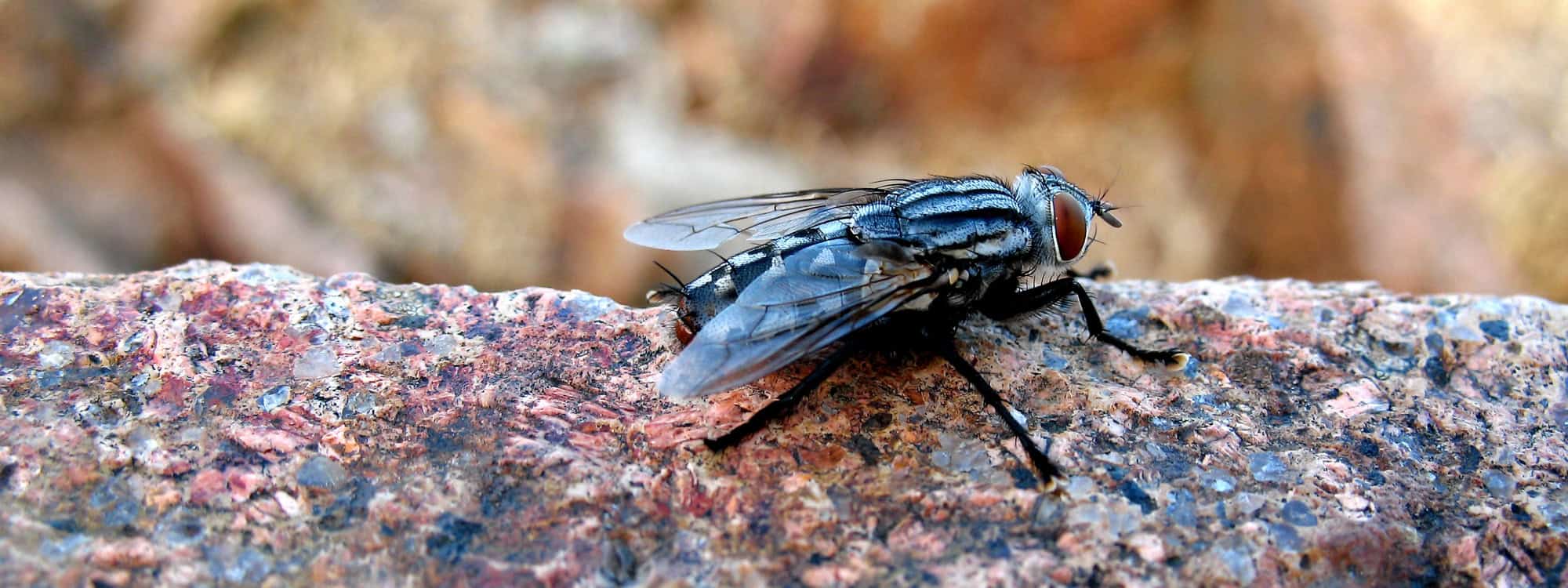Horse Flies
Identification:
Horse flies, commonly found in Muskoka, are large, biting flies, typically measuring between 12 to 25 mm in length. They have robust, grayish or dark-colored bodies with large, dark eyes that can appear as two separate sections. Known for their powerful bite, horse flies have sharp mouthparts used to cut into the skin of their hosts to feed on blood. Unlike other flies, they are more persistent and can be quite aggressive, particularly when seeking a meal. Their size and biting behavior make them easily identifiable, especially when seen in wooded or rural areas.
Habitat:
In Muskoka, horse flies are often found in areas near water, such as lakes, rivers, and marshes, where they breed. They prefer moist environments with abundant vegetation and are commonly found in forests, pastures, and fields. The larvae develop in aquatic environments, particularly in muddy or vegetated areas near water. Adults are most active during the warm months, typically from late spring to early fall, and can be encountered during outdoor activities, especially near water sources. Their presence near natural habitats and water sources often leads to increased interactions with humans and animals.
Diet:
Horse flies are blood-feeding insects, with females requiring a blood meal to lay eggs. They feed on a variety of mammals, including humans, livestock, and wildlife. Their bites can be quite painful, and the blood is used to nourish their eggs. Males, on the other hand, feed on nectar and plant juices. While horse flies are primarily known for their blood-feeding habits, they can also be found feeding on decaying organic matter. Their bites not only cause irritation but can also be a vector for diseases in animals, making them a concern for livestock owners and outdoor enthusiasts.
Behavior:
Horse flies are aggressive and persistent biters, often chasing their prey over long distances. They are particularly active on warm, sunny days and are most aggressive during peak feeding times, typically in the late morning and afternoon. Horse flies are known for their ability to fly at high speeds, making them difficult to avoid. They are also attracted to movement and dark colors, which can make them more likely to target humans and animals. While horse flies do not swarm like mosquitoes, they are known for attacking in a focused manner and can bite repeatedly if not deterred.
Prevention:
To prevent horse fly infestations, it is important to minimize exposure, especially during peak activity times. Wearing light-colored clothing, as horse flies are attracted to darker shades, and using insect repellent with DEET can help reduce the risk of bites. Additionally, avoiding areas near stagnant water or dense vegetation during peak horse fly activity can lower the likelihood of encounters. Bug Free Muskoka’s General Pest Control Service offers solutions for reducing horse fly populations around properties, especially near water bodies. Ensuring that animals, such as livestock, are properly protected from horse flies is also essential in preventing irritation and potential disease transmission.
Control:
Controlling horse flies involves a combination of reducing breeding habitats and using targeted repellents or insecticides. Professional pest control services may utilize traps or barrier treatments to help keep horse flies at bay. Regular inspection of outdoor areas, especially near water, is important for identifying potential breeding sites. If you experience an increase in horse fly activity around your property, contacting Bug Free Muskoka can help address the issue effectively. Their pest control solutions target both adult horse flies and their breeding environments, offering comprehensive protection.
For a proactive solution to horse fly management, Bug Free Muskoka provides a thorough pest control service, helping residents maintain a comfortable and safe outdoor environment by reducing the presence of these biting insects.

